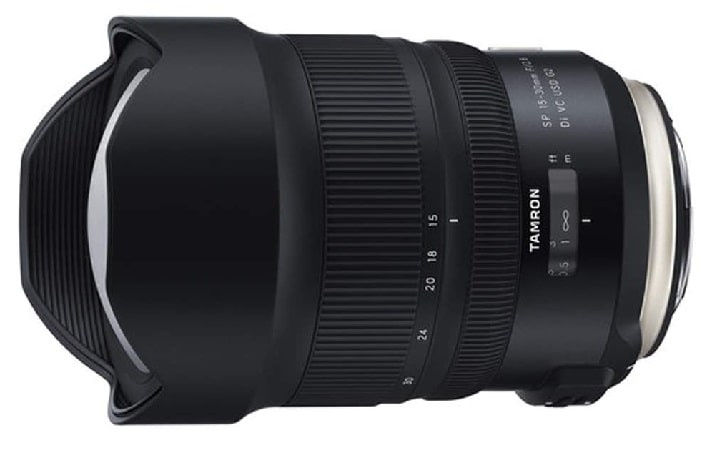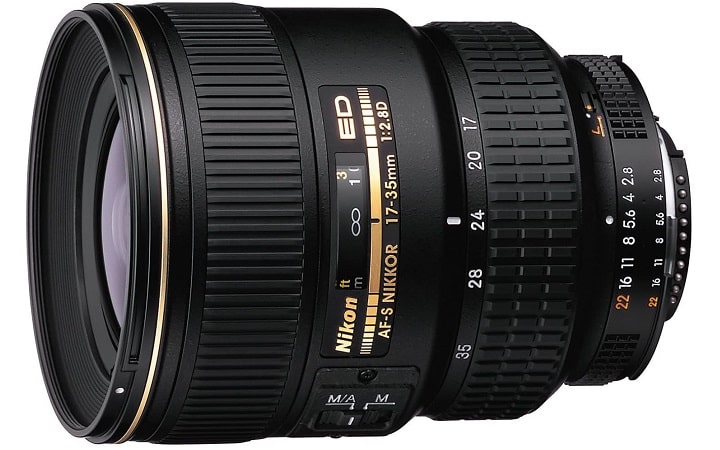5 Best Camera Lenses for Real Estate Photography (2024 Reviews)
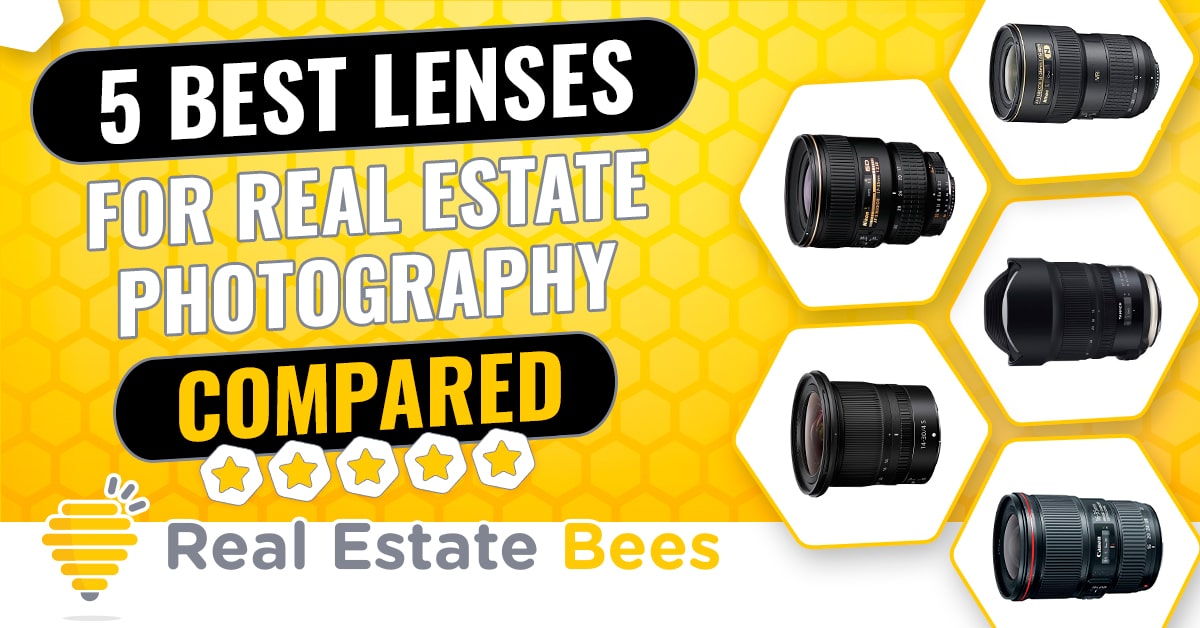
Real Estate Bees’ editorial team asked a few industry leading real estate photographers to share their expertise on the best camera lenses for real estate photography to help our readers make a more educated purchase decision when shopping for a lens.

With the help of the experts, we ranked the most popular lens models used for real estate photography from best to worst and described their features, pros and cons. Visiting retailers of the listed products by clicking links within our content may earn us commissions from your purchases but we never receive any compensation for the inclusion of products and/or services in our consumer guides. Read our editorial guidelines to learn more about our review and rating process.
Let’s start with the model selected by most of our experts as the best lens for real estate photography — CANON EF 16-35mm f/4L IS USM.
#1 Canon EF 16-35mm f/4L IS USM
Lens Highlights
- Ultra wide angle lens
- 16-35 mm zoom
- Zoom in and out option
Works Best For
- Architectural photography
- Daytime photography
- Twilight photography
- Creative portraiture
Pros
- Versatile
- Durable
- Great glass quality and sharpness
- Very little barrel distortion
- Offers enough range to capture properties both inside and out
- Wide angle lens perfectly captures exterior and inside detail shots
- Offers enough aperture under ambient light conditions
- Makes small rooms look bigger
- With the option to zoom in and out, it’s easy to fine tune shots
The Canon EF 16-35 mm f/4L IS USM lens offers the best versatility that isn’t found in most ultra wide angle lenses and just might be the best lens for interior real estate photography.

It offers enough range to capture real estate both inside and out. It also offers great quality with sharpness across the lens into the corners, with very little barrel distortion. I have used this lens in varying conditions, from rain to hot to humid, and it performs well every time.

If you stay in the 20-30 mm range, you can take in most rooms without excessive distortion. The F4 has enough aperture for most ambient light conditions.

Glass is super important when trying to achieve high-quality photos. Other lenses will do the job, but you may notice that the final output can be a little subpar. If you notice the red stripe on the lens, that means it’s Canon’s highest-quality lens, and it’s one way to tell the difference from a photographer that uses the pro line vs a lens of less quality.

Perhaps the best quality of this lens is its ability to make small rooms look grander and bigger. This lens makes otherwise small kitchen ‘nooks’ look like large eat-in dining areas.
Below is an example of a photo taken with Canon EF 16-35mm lens by Jamie Weaver.
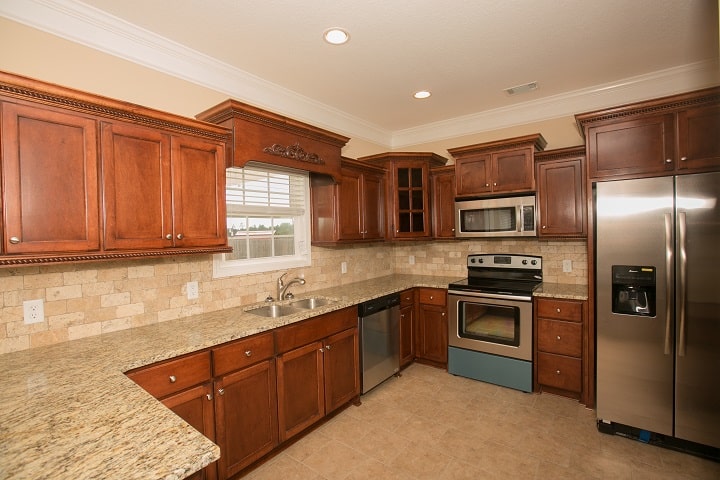
Cons
- For detail and exterior shots, this lens doesn’t offer the best narrow field of view
- At 17 mm, shots can look distorted
- As this lens makes everything look larger, some real estate agents may not prefer the type of shots this lens produces
- Aperture isn’t the best as the f/2.8 model

While it offers wide angle shots, the Canon EF 16-35 mm f/4L IS USM lens may not be ideal for photographers who may want to use a narrower field of view to capture detail and exterior shots. An example of this type of lens might be a 24-70 mm, on a full frame camera.

When the lens is zoomed at 17 mm, shots can be pretty distorted, but can still take in a 10×12 bedroom.
The very same quality that makes this lens the best in its class — the fact that it can make small rooms look bigger — may not be attractive for some agents who want to present properties in their truest forms.

It makes things look bigger than they are, if the Realtor doesn’t like that.
#2 Nikon Nikkor Z 14-30 mm f/4 S
Lens Highlights
- 14-30 mm zoom
- Small and lightweight lens
- Flat front
Works Best For
- Architectural photography
- Daytime photography
- Twilight photography
- Elevated photos
Pros
- Small and lightweight than any currently available camera lens brand
- No barrel distortion
- No lens flare
The Nikon Nikkor Z 14-30 mm f/4 S was a game changer in real estate photography lens equipment that DayDream Photography used for their company.

It is much smaller and much lighter than any previous lenses we had tried. It also has zero barrel distortion, but probably the biggest gain was this lens had almost zero lens flare, be in ceiling can lights or shooting straight into the sun. This can be attributed to the lens’ flat front element, but we tried other lenses with flat front ones and still had lens flare.
Cons
- A bit pricey for a real estate camera lens
- Not ideal for taking portraits
The best quality doesn’t come cheap, and this lens is the epitome of a good yet expensive product.

Moving from a Tokina 16-28 mm f/2.8 to the new Nikon 14-30 mm f/4 for mirrorless hurt at first. Price-wise, this lens is much more expensive than lenses we have previously used for real estate, costing 4 times as much.
#3 Tamron SP 15-30 MM f/2.8 Di VC USD
Lens Highlights
- 15-30 mm zoom
- Wide angle lens
- Weather-resistant
- Image stabilization feature
Works Best For
- Architectural photography
Pros
- Affordable
- Sharp
- Solid
- Smooth
- Tight
- Weather-resistant
- Well-built
- Less distortion
- Excellent image stabilization

The Tamron SP AFA012C700 15-30 mm f/2.8 Di VC USD wide-angle lens is on par in terms of image quality and focal length with some of the much more expensive options available from Canon or Nikon.
The minimal distortion that this lens produces helps with saving time in post production. You also save money by purchasing the Tamron 15-30 mm, which allows you to spend your money on other needs. Real estate photographer budgets are not limitless, and the Tamron gives them the flexibility to capture fantastic images at a cheaper price point.
Below are examples of photos taken with TAMRON SP 15-30 MM by Jason Danzi.
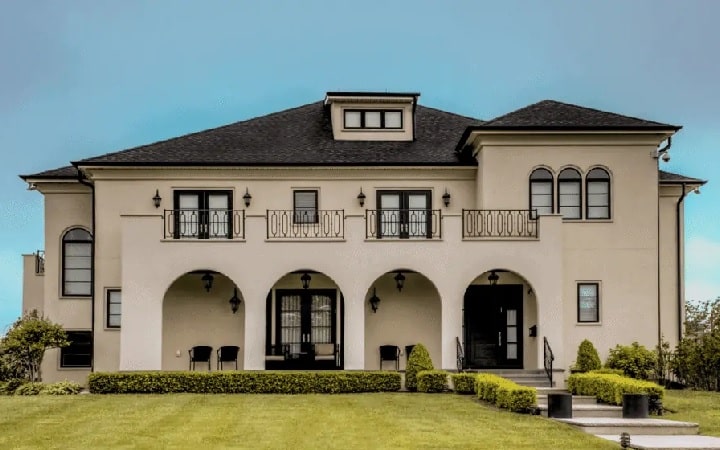
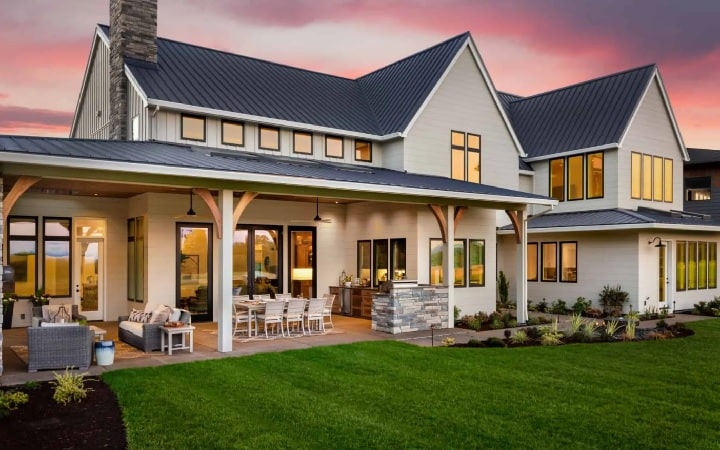
Cons
- Size
- Weight
- Produces “soft” images when shooting wide open

The only negative qualities that I can say about the Tamron SP AFA012C700 15-30 mm f/2.8 Di VC USDwide-angle lens would be its size and weight. Also, some might consider the images a little ‘soft’ when shooting wide open at f2.8.
#4 Nikon AF-S Zoom-Nikkor 17-35 MM f/2.8D IF-ED
Lens Highlights
- 17-35 mm zoom
- Wide zoom range
- 77 mm outer ring
Works Best For
- Architectural photography
- Daytime photography
- Twilight photography
Pros
- Razor-sharp lens
- Less distortion
- Captures wide-angle interior shots
- Can expand aperture to capture detail and lifestyle images
- Zoom range is ideal for shooting real estate photos
- 17 mm zoom captures small rooms perfectly
- 77 mm outer ring does not rotate when zooming in or out
Older models are more reliable, and this holds true for the Nikon AF-S Zoom-Nikkor 17-35 mm f/2.8D IF-ED.

I find this older Nikon model checks the boxes for 99% of the real estate photography I shoot over any given month. The lens is razor-sharp at f/8, which is the aperture I use for most wide-angle interior captures. The ability to open all the way to f/2.8 comes in handy for adding a touch of bokeh to the detail/lifestyle images I include for larger packages or on premium listings.
This lens’ zoom range is also suitable for real estate work.

Although it is rare that I ever need its widest range, 17 mm can be handy when a small bathroom or butler’s pantry is seen as a ‘must shoot’ space. Most of my exteriors are photographed at 30-35 mm, and at that range, this lens has little, if any distortion.
Below are photos taken with Nikon AF-S 17-35mm by Chip Tait.

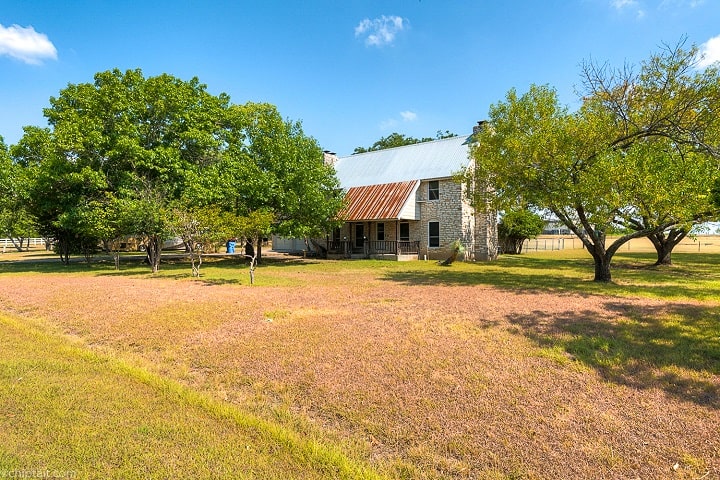
When utilizing a polarizing filter, the outer ring of this lens does not rotate, which can be helpful for photographers when zooming in or out.
Overall, the Nikon AF-S Zoom-Nikkor 17-35 mm f/2.8D IF-EDis the lens to have when shooting real estate pictures.

If you only want to keep one lens in your bag for real estate photography, I cannot recommend the Nikkor AF-S 17-35 mm f/2.8 highly enough.
Cons
- A bit heavy at 1.5 pounds
- A bit pricey
While it’s big on features, the Nikon AF-S Zoom-Nikkor 17-35 mm f/2.8D IF-ED doesn’t quite cut it when it comes to build.

This lens weighs in at a little over 1.5 pounds, which may be on the heavy side for some folks.
Moreover, the price tag can be a turn-off for some professionals on the lookout for high quality at a low price.

Quality comes at a cost, in weight and in dollars. This lens will set you back around two thousand dollars. If you’re patient, you may find a used model in good shape for under a grand.
#5 Nikon AF-S Nikkor 16-35 MM f/4G ED VR
Lens Highlights
- 16-35 mm zoom
Works Best For
- Architectural photography
- Aerial drone photography
- Landscape photography
Pros
- Captures photos in a small area without needing lots of space
- Perfectly takes shots even in natural light
The Nikon AF-S Nikkor 16-35 mm f/4G ED VRis the ideal lens to use when shooting a property on a clear day.

I like using natural light if the room inside has lots of light coming in. If not, I bounce my flash on the ceiling giving a big soft light that makes the room look natural.
This lens is also great for landscape and real estate photography because you can capture your scene in a small area without needing lots of room.
Cons
- Not the best lens to use when taking shots during cloudy days.
This lens, however, is not the ideal equipment to use without good natural light.

Cloudy days are the worst for the scene of the property.
What Is the Best Lens for Real Estate Photography?
Best Overall: Canon EF 16-35 MM f/4L IS USM
Judging from the responses provided by real estate photographers surveyed, the Canon EF 16-35 mm f/4L IS USM is the best Canon wide angle lens for real estate photography.

From my research on Canon lenses, this one seemed to be the most used lens.

This was actually the first lens I started with as I could do a lot of different things with it. The L series 16-35 lens is a must-have for real estate photographers as you can zoom from 16 mm to 35 mm, and when on a full frame camera it becomes a super wide angle lens that will pickup the whole landscape.
For photographers who want to produce excellent property photos, this lens doesn’t disappoint with its high-quality features:
- Versatile
- Durable
- Great glass quality and sharpness
- Very little barrel distortion
- Offers enough range to capture properties both inside and out
- Wide angle lens perfectly captures exterior and inside detail shots
- Offers enough aperture under ambient light conditions
- Makes small rooms look bigger
- With the option to zoom in and out, it’s easy to fine tune shots
Best for Newbies
Canon EF-S 10-18 mm f/4.5-5.6 IS STM
Canon remains the brand to beat when looking for lenses as a newbie real estate photographer.

I would recommend the Canon EF-S 10-18 mm f/4.5-5.6 IS STM lens. It’s highly rated at a good price point of around $300.
Tokina AT-X 16-28 mm f/2.8 PRO FX
For those who want good quality lenses at pocket-friendly prices, one of the go-to brands to check out is the Tokina AT-X 16-28 mm f/2.8 PRO FX.

On a budget, the Tokina 16-28 f/2.8 is an amazing lens, especially for the price point.
Canon EF24-70 mm f/2.8L II USM

The Canon EF 24-70 mm f/2.8L II USM is very versatile, which makes it a good lens for any newbie real estate photographer.
Any Lens from Tamron or Sigma

When starting out in the business, a less expensive lens from a third-party manufacturer such as Tamron or Sigma is a great find.

I would look at the Sigma Art line. I’ve tried a few of those lenses and they look great, color looks great, and they are incredibly sharp for the price. If I was just starting out, I would definitely look into this line as a start. But do your own research for sure!
4 Expert Tips on How to Choose the Best Camera Lens for Real Estate Photography
Additionally to the reviews of the best lenses, we asked our experts for advice on choosing the best model for your needs.
#1 Look for a Versatile Lens
Real estate photography is all about variety, so it is very important to use a lens that can do anything.

Most, if not all, real estate photographers require a wide-angle lens when trying to deliver optimal, high-quality, realistic images to their clients. In order to be prepared for a variety of shots you might need on any given location, I would suggest purchasing a lens that gives you a range of focal lengths anywhere from 15 mm to 30 mm.

It’s important to find a lens that is versatile in the field, while not creating challenges in post production.

I feel versatility is key. If you’re starting out, buy the best pro-sumer wide zoom you can afford. As your business builds, upgrade to professional-level lenses. They are an investment that will pay dividends forever.
#2 Brands Don’t Matter but Look for Serious Quality
There are great, established names in real estate photography lenses, but for professionals, brands don’t play a major role in capturing good property shots. Quality does.

There is no particular brand that comes to mind in terms of what to avoid. My suggestion would be to avoid anything too wide or anything under 12 mm, because you start to introduce some serious distortion and vignetting into your images.
When looking for quality, keep in mind that the lens you’re after should be one that produces little to no flare and less to zero distortion.

Inferior lenses may have excessive distortion or lens flare, which will create delays during editing. High-quality lenses will produce sharper images with more color accuracy, reducing editing time and allowing you to deliver quality media consistently.
When using a full-frame camera, don’t use too wide of a lens. It can cause unnatural elongation and width distortions.

For a crop sensor camera, use a lens that when multiplied by the crop factor will be in the 16-17 mm range.
#3 Don’t Break the Bank…
When just starting out in the industry, there is no need to spend a fortune on lenses. There are several options available that will produce amazing results for a moderate budget.

Real estate photographers who are just getting into the business do not have to go out and spend $1,000 and up on a new lens. An expensive lens doesn’t do you a lot of good if you don’t understand the basics of real estate photography, dealing with customers, marketing, and running a business.
#4 …but Spend a Little More to Make a Good Investment
While price doesn’t matter when buying a camera lens, real estate photographers suggest that it is still best to spend a bit on lenses that can last a lifetime.

Before I ‘graduated’ to the Nikon D750 body, I used the crop-sensor D-7000. My lens of choice on the D-7000 was the SIGMA 10-20 f/4-5.6, which got me by for several years. When I made the choice to take my work to the next level, my equipment needed to follow suit. When you invest in professional-level lenses, they will last decades. You are likely to change camera bodies as the tech improves, but good glass never goes out of style.
This means staying away from really cheap lenses as they may not produce sharp results.

If you can afford it, choose a lens from your camera manufacturer. While more expensive, the results are usually better and you probably won’t need to replace the lens for a better one later on.

If the price point seems too good to be true, well then it probably is. Before making a purchase, do your research and read user reviews. If the overwhelming consensus is negative, then you aren’t doing yourself any favors by saving some money on a cheaper lens. You will just be creating more work for yourself in post-production and your clients won’t be happy and ultimately, you are going to have to scrap a budget lens for something of higher-quality.
Learn More About Real Estate Photography Equipment
To help newbie real estate photographers, realtors and homeowners select the best equipment to photograph and film real estate, we at Real Estate Bees, in conjunction with a number of leading industry experts, created comprehensive consumer guides for various real estate photography equipment and accessories:
- Best Digital Cameras for Real Estate Photography
- Best 360 Degree and 3D Cameras for Real Estate Virtual Tour Photography
- Best Sony Lenses for Real Estate Photography
- Best Flashes for Real Estate Photography
- Best Tripods for Real Estate Photography
- Best Drones for Real Estate Photos and Video
If you also want to learn more about the best practices of photographing properties, read our article 30+ Real Estate Photography Tips.



